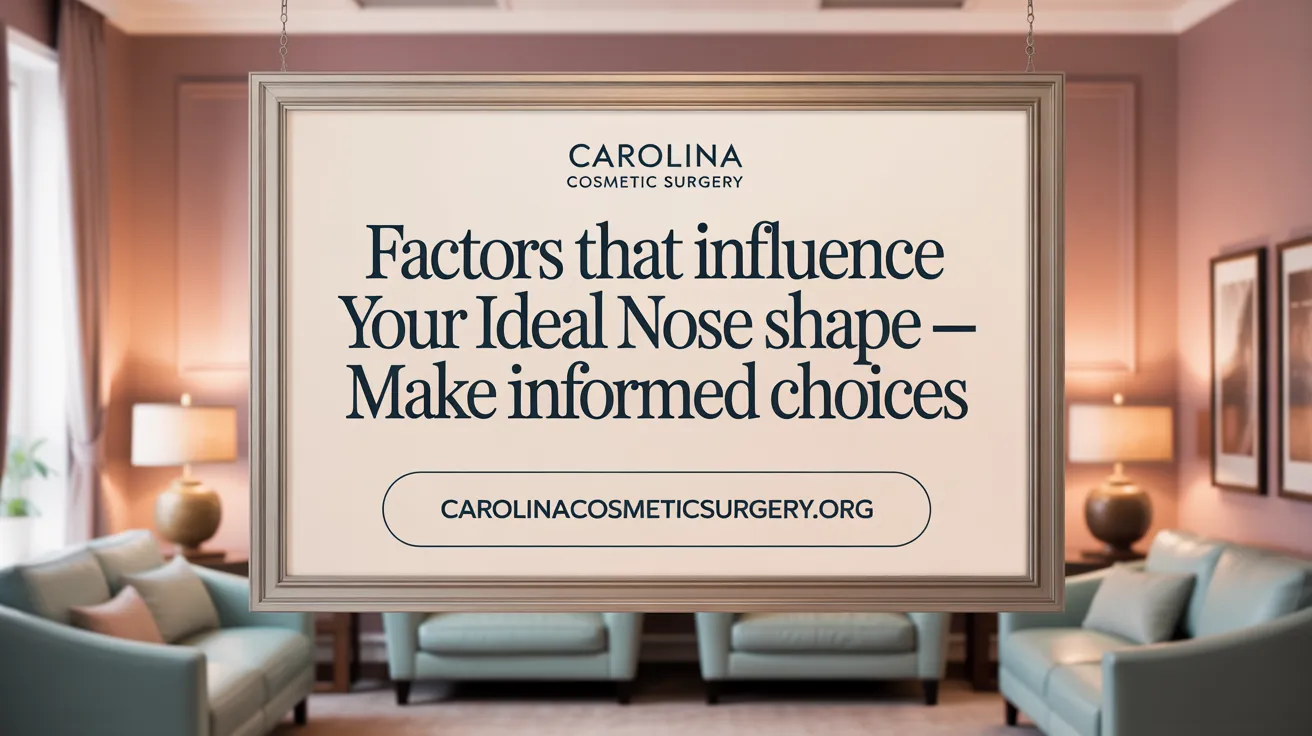Understanding the Importance of Choosing the Right Nose Shape
Selecting the ideal nose shape for rhinoplasty is a pivotal decision that influences not just your appearance but also your facial harmony and self-confidence. This procedure goes beyond aesthetics; it encompasses functional improvements and respects individual ethnic characteristics and personal goals. Our comprehensive guide will explore the various nose shapes, factors influencing selection, surgical options, and how to effectively communicate with your surgeon to achieve a natural and balanced result.
<!-- VIDEO:eyJsaW5rIjoiaHR0cHM6Ly93d3cueW91dHViZS5jb20vd2F0Y2g/dj1GZHBsb25PMi1GZyIsImltYWdlVXJsIjoiZGF0YTppbWFnZS9qcGVnO2Jhc2U2NCwvOWovNEFBUVNrWkpSZ0FCQVFBQUFRQUJBQUQvMndDRUFBa0dCd2dIQmdrSUJ3Z0tDZ2tMRFJZUERRd01EUnNVRlJBV0lCMGlJaUFkSHg4a0tEUXNKQ1l4Sng4ZkxUMHRNVFUzT2pvNkl5cy9SRDg0UXpRNU9qY0JDZ29LRFF3TkdnOFBHamNsSHlVM056YzNOemMzTnpjM056YzNOemMzTnpjM056YzNOemMzTnpjM056YzNOemMzTnpjM056YzNOemMzTnpjM056YzNOLy9BQUJFSUFGTUFsQU1CSWdBQ0VRRURFUUgveEFBY0FBQUNBZ01CQVFBQUFBQUFBQUFBQUFBRUJRQUdBZ01IQVFqL3hBQTNFQUFDQVFNREFnUURCUWNGQVFBQUFBQUJBZ01BQkJFRkVpRXhRUVlpVVdFVGNaRVVNb0doOEJVakpMSEIwZUV6UWxKVHNnZi94QUFhQVFBQ0F3RUJBQUFBQUFBQUFBQUFBQUFEQkFFQ0JRQUcvOFFBSlJFQUFnSUJCQUVFQXdFQUFBQUFBQUFBQUFFQ0VRTUVFaUV5TVNJelFWRVRRbUlGLzlvQURBTUJBQUlSQXhFQVB3QmVxQUwwNXJ3TFdXOFZJamswV2pyUFZCelJVZlFWZ2dIZXR5RUFHb0pzMlFzUTJhT2psSkh6b0tQbm1pRU81bEE3Vnh3MzA4OU0wMWxrSmo0cFBiSGJqRk1vcEFRQWE0NmpkWXhiQXpFZDg1b0hVV2xsdU5zaEpWZWdKcDVDbytENWZTa1Y1ek0yNDhaNXBEVnQxUS9wSXB1emRiS3FSK1JHSjloMW9pZGJtNWpNU3NZZ1JqS2ZlL1BpZ29abzRIVmk0NDdFOXFYNnI0eXQ3ZVUybW5LTGk3emc3VDVVK1ovcFNrVXh4cmtNMDd3OW9rTEdLZXhpdUNNamZjWmxiZDdNMlNLQ3QvRGNNYzhyeFJxc1pjbE5wNkQ5Wm9qUjRaWm1TYThsTWtoWU5nRENxZllmM3AvYW9BdUt1bTJpazBreXR5YU5jUXFHaG02Y1liamoycXhhSGZ5dkdscHFLN28rUXNweVdVLzJvOUlGWWM4MXBhRklXM1lBb3NIS1BJdmtVWnFpWFVMVzhwamJudUQ2aXRCcHF4VzUwL2M2RUZPZU9vK1h0U3FuRTdSbk5VekU5YWxRdHpYbFFRY2xNNHJaSE9BUnpTYU9jdDNvbUVzekNqMldvYmZIeGptc2xuSmZBb1VLV3JiYklmaTF4MURlSmpzRmJZNU5yaXRjQXJObEk1cmprTnJkd1FLT3R2TklCVmVndWRod1RUYlNwVEpjREJxQ1VpNWFiRm1JaHU5VmpYZE11NXI4eFdpamFSeVMrMENyVFp5QllnZStLV3pReU5lbWZzTzFCeVJVdUdGaE53NVJSdkYybVhPazJ0bXFYYlBMY1M3WEtqaFI3Wi9uU2pRYkpGdW1CSzUzSE9TS3YzamkwK0xwTnROSWpBaTVqS0gwejF6K0ZjdGU1MDZTNGEzbGloUUsyREt5bnFmVWlscDQvd0JVTjRjc210MG1kVHNvMVFaWG5hTThVenMzQlFaNE5VUHdhUWs5ekRCS3pSaUxPTis0WjNLT1ByVnExT0NaTFVmdlpJZ1FNbFRnL1doYmR2QVp2Y3l5UVJ0dHppaHJ6ekZsSGF1ZDZaTHBYMjBxbDRrMG1UbFpyaytiOE04MWROTG5ndWQzd0N5NEhLWkpBK1dlbFdsNHBBMUNuYkdHamxwWVhpWTVlTWtNdWVvTkR5b1k1Q2pkUlUwZ3VOWHZTUWRxZ2JUMnJMVloxanVWVWpKZmtlMUhoS29xeExMRDF1Z1p6aHFsZWtBbk5lVVVYT0cyYTVBcGpCZ01LQXRtd0tNaGJKNG82THNaeGp5MTdIa01heGlQa3JNWXFTQTZDWEdCUjYrWmVhU0xLcXNEUkJ2bFJNNXFHeVZGaExxQk1NZXRQZEdqS3lCejBxbnBxSWVmZzV4VngwRzQrMEtCamtDbHA1VkdWRDJQVFNsQ3kxVzh5SkJsdTlhWnRRaVFIZ21zVXRKSFFZSnhXdTRnaVNJaDF5VHhWcnNVbXRybzAzVjVCckZqOWp1WElBT1IySkk2VlZENGFzNHJpUmxSSkZ6d1R5YXMycDJxL3NlUXhLQTZEZm52Z2RhclkxVVEybTBlWjZWek5wOER1bFNsRmgraFc4RWQvZHRFZ0RNaUs3ZXBKNy9TcmJmV2tWN2F5Vzh5aG8zVGFRZlNxcDRVa2pWWnBwbkdXa1VIUHFNbit0V1U2amFUU3lSMmx3a3JKOTVVT1NQbmpwVkxwY2hKTDFjQ0t6OElhZEZjTzdXc2I3MTJIcjkzMHAvWTJOdHBzWWl0WVZqUmV5MWhwMm93eWwxejUwT0dVOWpSRHlCMnlLNXl0ZVNIRnBzeXRmaG1USWp3ekg3eDlmVDhxQjFGUk0wWjdxQnlEMXJaTElscUVsa2NqSkFqajlXL1JvSDdXbHhKdFNiOTUxWlIyL1hQMG8yT0xrdVJUTzFGOEJJeGl2SzBsRy83Ryt0U2pDaHcrSnNVZGJNS1ZKSlJrTXVBS09GRzRtd3RZRzQ5NkFNM3ZYaWxwR3d0UTNSYU1iZEkzdmRuZHdhRXVyeHlNQTBVOXNWanlhVnpqelVya3pmUm80Tkw4c08wMW1Makpyb25oVmlEOHhYUGRMWHppdWgrR3h0WlRTRGszT3pVMktPSnBIUTdGUjhBRStsSzd4ZmlYRFo2Q2lZTGpFT0FlMUR1Y3NUV2xGMmp6bWRPTE1KVkVzTHhIbzZsZnFLNXJlUnpRVE9vUU02RWdvVGpKSHZYUzZxSGlWSWwxSU5HVnk2ZWZCNzV4UXN5NHN2bzV0U2NmczFhRE1aZERMbXlrY3l6TVdoRFlZWUNqSDgrbFdPQytObGJmdnROdTQwWHZnRS9UcWFXV2RuS05LaVdOVjNzeGJucGpQOEFpbmVud3NrUy9GKzhCOUtFM0VmNHBpNGZ4R29yZFc4TThHVkFkWlUyN2hqZzQ5YzQrdE5tZG9iRzRsWGEwbTNDQitoWTlBYXd1NVYrSUF2TGRLVjY3Y0xLaTJlVGlNQjJ3ZS9iOWU5VnhwYjdZRFU1ZG1Ld002WHFkenFVTjNKSWdBZmN3QjRDam9CK2Y1VjdZNk5jVzE4OXkwd3d4UGxCN1o0L3JSU1hNa1VDSUdPSkFNSDlmU3RWdnFYeDBjazQydVZQNFZvcVc0eVZQY015MG5xS2xMVGRqUDNxOXFLUmFqaThRUFdpNCttVFE2a1lvbUVic0NyaGtqYkZHMGg0cGphVyt4aGtVZHBka3BqQkk1cjI4VVFuQTROSjU4dndqVTB1bitXYWI3YWtKeFZhYzdwRDg2Ylg4NUtFWnBRZ3kxTFh3YVNWRGJUQU53cSthQzJDdFViVFJ5S3ZPZ3FjQ2dQc0VsMEhlcTNUdzJBRWI3WFk0QjlLclVWNzhKR0VwbW5QL041M3o5QWNWdjhBSE4rMWpweUZDQStSak5JTERVb2IySVpPMXY4QWNQUTAwOTZpbWpJZXlVNll5UzZlVUVveFgyQjZWb2M0UFgzckNLT1MyblpXSGtmbFRVZEpKSk5zVWJ5TzNSVVVrbjhCUWVXeTlKZUN4L2IvQUxCcEZrNFF1N2NFRThZT1RURzB2cmk2aXdFRUtrZFNjbWttdVEvWnJIVElwZHlzWXdXVWo3dUZIYjhhTXNKRVdBYkpTM1R0Ulo4TXBCM0ViUXdyRUNkeFpqMVluSk5IYWpvZW55SUczdEhjTWczTUNTR09NYy80cFhESVdjQUU4VXlrdUlvWUd1THFRTEdneVdZOUtyR2JqNFJUTGlqTmVyd1YrNmUwczBFTjFQTEE4ZVdSR1hlSDljRVk0NmU5THJIU1dNcjNVZW9SekpLeFlST1BobFNlM1BXbHZpYldQMmpjNVJOa1VZT3dIcWZjMXE4SzNRT3EyeXlzU2o1eG5zU09LZGp1MlcvSWhMVDQ5MVJMVTF2cU1XRk5sTDA0S3haQi9FVktld3l6UnB0aW5kRjlBZUtsTC9uWDBjLzg3K2o1OEhTamJicXZ6cVZLMENZbHUwdi9BRVB3b0hWaWZpZGFsU3M3TjJOelQ5QkZlRTRvYUhyVXFVSkRBODA0RGN0WDNRQU5vNHIycFZQMkp5ZTJWei82YVNWZ1hQQmZwVlJzbUtxNVU0SVUxS2xhTWZhTUtmdWw3OE0veFdtbjdSNTl2VFBhbm1neEpGZXlOR29CeGpOZTFLVVhjYVhnYitJclMzdVdzelBFcmt3bm52MTlhcnNzS1FYRWNjWUlVam9XSi9uWHRTdXpkbWRpNm9aV3d3VGlrUGltYVZyOVlHY21KSWc2cDJ5YzgxS2xUZzdvcG02bEx2bmI0TjRjbklPQjlLTDBsaXVyV0cwNDg2ZithbFNuMzRFMTVPb1JFN2V0U3BVck1IbWYvOWs9IiwidGl0bGUiOiJIb3cgdG8gQ2hvb3NlIGEgTm9zZSBTaGFwZSB8IFBsYXN0aWMgU3VyZ2VyeSIsInNuaXBwZXQiOiIuLi4gU2hhcGUgQ29uY2VybnMgaWRlYWwgbm9zZSBzaGFwZSBub3NlIHNoYXBlIHN1cmdlcnkgbm9zZSBzaGFwZSBjb3JyZWN0aW9uIHBlcmZlY3Qgbm9zZSBzaGFwZS4gLi4uIGNob29zaW5nIHRoZSBzaGFwZSBvZiB5b3VyIGRlc2lyZWQgbm9zZS4gTWFueSAuLi4ifQ== -->Exploring Nose Shapes and Their Unique Features

What are the different nose shapes available for rhinoplasty?
Nose shapes vary widely, and understanding these differences is crucial when planning rhinoplasty. Common types include the straight or Greek nose, known for a smooth, linear bridge; convex or Roman nose with a prominent hump; concave or scoop nose that dips inward; bulbous nose characterized by a rounded, wider tip; and upturned or celestial nose, featuring a short, turned-up tip. Additional shapes include button noses, which are small and rounded, and hawk noses that are hooked with a curved bridge mimicking a bird of prey.
Deviated or crooked noses involve noticeable bends or asymmetries, often requiring reconstructive surgery to straighten. Broad or wide noses are marked by a wider nasal bridge and nostrils, common in some ethnic groups. Longer noses may disrupt facial harmony, while fleshy noses with thicker skin can make subtle refinements challenging.
Ethnicity greatly influences nose shape, with African noses typically presenting a broad base and flared nostrils, Asian noses often featuring a low bridge and rounded tip, and Caucasian noses tending to have a more prominent, straight bridge.
Choosing the appropriate shape involves evaluating facial proportions and individual aesthetics. Techniques can include narrowing, augmenting, or reshaping various nasal components—cartilage, bone, or soft tissue—to achieve a balanced, harmonious appearance.
Ultimately, rhinoplasty offers customization options tailored to each person's nose shape, ensuring the outcome enhances facial harmony while respecting natural features. A thorough consultation with an experienced surgeon helps determine the best approach to refine or alter the nose according to personal preferences and health considerations.
Key Factors in Choosing the Right Nose Shape

What factors should be considered when choosing a nose shape for rhinoplasty?
Selecting the ideal nose shape for rhinoplasty involves a detailed assessment of several important factors. First, understanding the patient's ethnic background is crucial, as noses vary widely across different ethnicities. For example, Caucasian noses often have prominent bridges, while Asian noses may feature a low nasal bridge and rounded tip, and African noses might have a broader base with flared nostrils.
Personal aesthetic goals also play a vital role. Patients may desire a straight, upturned, narrow, or more prominent nose, aligning with their face’s overall harmony. Surgeons use tools like the 10-7-5 analysis, which evaluates facial proportions, the nose’s features, and symmetry from multiple angles—frontal, lateral, and basal—to guide surgical planning.
Further considerations include the thickness of the skin and underlying nasal bone and cartilage structures. Thick skin can conceal subtle changes, making subtle refinements more challenging, whereas thin skin enhances the visibility of minor alterations.
The relationship between the nose and other facial features such as the chin, cheeks, and eyes influences the appropriate size and shape. For example, a large or crooked nose on a small face might appear disproportionate, while a smaller nose on a larger face might not be impactful enough.
Prior nasal surgeries and the patient’s lifestyle are also critical. Previous procedures may affect available cartilage and bone, and active lifestyles or certain health conditions could influence healing and long-term results.
Lastly, an experienced surgeon considers both aesthetic and functional aspects, aiming for a nose that complements the face while maintaining or improving breathing.
In summary, choosing a nose shape involves a comprehensive evaluation of ethnicity, facial harmony, skin and bone anatomy, personal goals, and surgical history. This ensures results that are natural, balanced, and enduring, fulfilling both aesthetic desires and functional needs.
Determining the Ideal Nose Shape for Your Facial Features

How do I determine which nose shape suits my facial features?
Choosing a nose shape that complements your face involves carefully analyzing your overall facial structure and specific features. Begin by identifying your face shape—common types include oval, round, square, heart, diamond, or rectangular. Each face shape pairs best with certain nose contours that enhance natural harmony.
For example, an oval face benefits from soft, rounded nose lines that maintain an elegant balance, while a square face may look more harmonious with a slightly tapered or curved nose to soften angular features. A diamond-shaped face often pairs well with a nose that has a prominent tip and a flatter bridge, emphasizing the cheekbones without overpowering them.
Evaluate key aspects like nose height, the definition of the nasal tip, nostril width, and any existing bumps or curves. These details help identify your specific nose type, such as a bumpy or bulbous nose, which then guides your decision on the ideal shape.
Matching your facial features with appropriate nose styles can significantly improve overall appearance. For instance, a straight nose is often favored for square faces, while a slightly curved or upturned nose can add softness to round faces.
To achieve the best outcome, consulting a skilled rhinoplasty specialist is crucial. They can assess your facial proportions and recommend a nose shape that enhances natural beauty while maintaining facial harmony. Using visual aids like digital imaging can help you better understand how different nose shapes might look on your face, supporting informed decision-making.
Surgical Techniques and Options for Nose Reshaping
What surgical techniques and options are available for shaping the nose?
Rhinoplasty offers a variety of surgical methods tailored to meet individual nose shapes and aesthetic goals. Surgeons may perform dorsal hump reduction to smooth out bumps on the nasal bridge, or use cartilage grafts and bone adjustments to enhance structure and symmetry.
For the nasal tip, techniques include modifying the tripod support structure of the lower lateral cartilages through sutures, grafts, or resection. These adjustments help refine the tip's projection, rotation, and shape, creating a more balanced appearance.
There are two primary approaches to rhinoplasty: open and closed. Open rhinoplasty involves an incision across the columella, providing direct access and better visualization for extensive reshaping. Closed rhinoplasty, performed through internal incisions, is suited for minor modifications and preserves most of the nasal skin.
Surgeons utilize specific maneuvers such as osteotomies—controlled fracturing of nasal bones—to narrow or straighten the nasal bridge. They may also reshape the nasal base or nostrils through alar base reduction.
Advancements in technology have enhanced surgical precision. 3D imaging, CAD/CAM, and virtual reality tools enable detailed preoperative planning. These innovations help patients and surgeons visualize expected outcomes, ensuring alignment with individual goals.
Postoperative care is vital: splints and nasal packing stabilize the new shape, while follow-up visits monitor healing. Complete healing, including final nasal contours, can take up to a year, allowing swelling to fully subside and the tissues to settle.
Ultimately, the choice of surgical technique depends on the patient's unique anatomy, desired results, and the surgeon's expertise, aiming for a natural, harmonious nose that complements facial features.
Communicating Your Preferences and Expectations Effectively

How can patients effectively communicate their preferences and expectations to their surgeon?
Clear communication between patient and surgeon is essential for achieving the desired rhinoplasty outcomes. One effective way to do this is by preparing visual references, such as photographs of noses with features similar to your aesthetic goals. These images help the surgeon understand the specific shape, size, and profile you envision.
Additionally, using digital imaging or computer-generated simulations can provide a realistic preview of potential results. This technology allows you to see how different nose shapes may look on your face, helping to align expectations before surgery.
During consultations, it’s important to discuss your concerns openly. Focus on specific features you wish to change, whether it’s narrowing the nose, straightening a crooked bridge, or refining the nasal tip. Use descriptive language—such as “a more defined tip” or “a straighter bridge”—to communicate clearly, especially since medical terminology can be confusing.
Engage in honest dialogue about your goals and listen carefully to the surgeon’s advice. Queries about the limits of what can be achieved based on your skin type, cartilage, and bone structure help set realistic expectations.
Reviewing before-and-after photos of previous patients gives you a tangible idea of the surgeon’s work and the kind of results to expect. These images can guide you in refining your preferences to match feasible outcomes.
Ultimately, collaboration and transparency are crucial. Express your preferences clearly, ask questions, and work together with your surgeon to develop a personalized plan that respects both your wishes and the anatomical realities of your face.
Preparing for Your Rhinoplasty Consultation and Making Informed Decisions

How should one prepare for a rhinoplasty consultation and make informed decisions?
Preparing effectively for a rhinoplasty consultation is essential for achieving satisfying results and making informed choices. Start by researching qualified surgeons who are board-certified and have extensive experience in rhinoplasty; reviewing their portfolios and before-and-after photos can help assess their skills and aesthetic approach.
Next, clearly define your goals. Bring visual references, such as photos of your desired nose shape, and consider your motivations for surgery—whether improving appearance, correcting asymmetry, or addressing breathing issues.
Gather your complete medical history. This includes current medications, allergies, and any previous nasal surgeries or injuries. Prepare a list of questions about the surgeon's techniques, potential risks, expected recovery, and costs involved.
It's important to follow all pre-surgical instructions provided by your surgeon, such as avoiding blood-thinning medications, alcohol, and smoking in the weeks leading up to surgery. These steps reduce risks and help ensure optimal healing.
Plan for the post-operative period by arranging transportation to and from the surgical center, taking time off work, and preparing recovery supplies like cold packs and prescribed medications.
Maintaining realistic expectations is crucial. Use consultation discussions, imaging tools, and your surgeon's guidance to understand what changing your nose can achieve and what limitations exist due to your unique anatomy.
By actively engaging in open dialogue, asking questions, and reviewing all information, you will be better equipped to make a decision that aligns with your aesthetic desires and health considerations, leading to a more satisfying surgical experience.
Embracing a Nose Shape that Reflects You
Choosing the right nose shape for rhinoplasty is a deeply personal journey that involves understanding your facial anatomy, ethnic background, and aesthetic aspirations. By carefully analyzing different nose shapes, considering crucial factors, and collaborating closely with a skilled surgeon, you can achieve a natural, harmonious look that enhances your unique beauty and boosts confidence. Comprehensive preparation and open communication are essential to set realistic expectations and ensure the best possible outcome. Remember, the goal of rhinoplasty is not to imitate others but to sculpt a nose that complements your face and respects your individuality, creating balance and lasting satisfaction.
References
- How to Choose Between Nose Job Shapes - Dr. Yash Plastic Surgery
- 12 Types of Noses and Surgery Options For Each One
- Nose Shapes after Rhinoplasty - Exploring the Most Common Nose ...
- Choosing the Right Shape for Your New Nose - Philip Miller MD
- Choosing The Perfect Rhinoplasty Shape: Your Guide To Facial ...
- Nose Reshaping Surgery | ABCS
- Choosing Nose Shape and Size for Rhinoplasty - Dr. Jason Cooper
- Choosing the Right Nose Shape for Your Face | Sean Weiss, MD
- How to Decide on a Nose Shape for Your Rhinoplasty if You're ...
